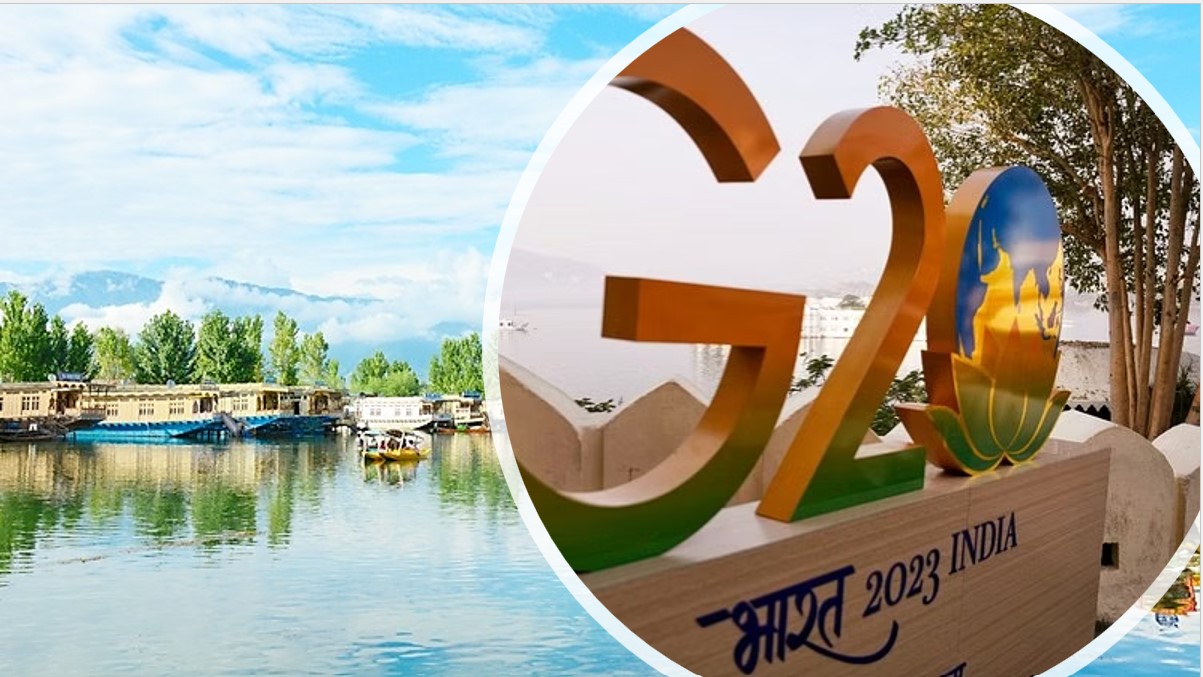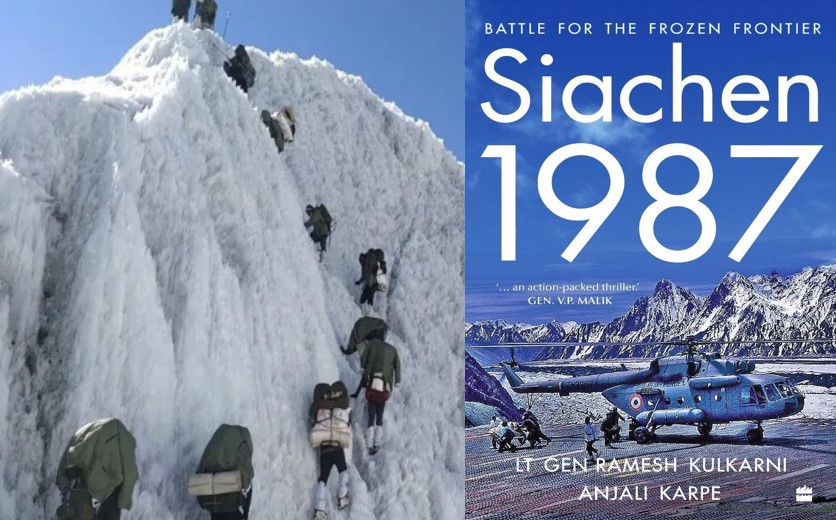
In the New Year China Initiates Its Well-known Strategies
 Sat, 08 Jan 2022
| Reading Time: 6 minutes
Sat, 08 Jan 2022
| Reading Time: 6 minutes

2022 began with a couple of events occurring at the Line of Actual Control (LAC). An exchange of sweets at some of the friction points took place reportedly after a long gap; a supposedly good tension reliever with a message of goodwill which did not achieve its intent beyond a single day. Immediately thereafter the PLA went into triumphal mode by putting out on Global Times, its mouthpiece, some photographs with the PLA presence in the Galwan Valley along with a Chinese flag, purportedly one which had once flown at Tiananmen Square in Beijing. The accompanying message was all about not losing an inch of national territory and was meant to be intimidatory.
It was only realised later that the photographs were old, well before the current winter season, and they were shot far behind the demilitarised zone and not anywhere near the scenes of the clashes of June 2020. The intent of the PLA was clearly to project that it was in control over the entire Galwan Valley and also to trigger nationalist passion in China, something which has been on the rise since President Xi Jinping tried to give an impetus to China’s ambitions during his lifetime.
Almost simultaneously came the news that a new prefabricated bridge was under construction since October 2021, to span the approximately 300 metre gap at the narrowest point of the Pangong Tso lake which stretches rearwards towards Chinese occupied territory. The bridge would link the north and south banks of the lake at a point closer to the LAC and therefore in greater proximity to the PLA defences in the Spanggur area where the Moldo garrison is located.
Moldo is the location of the headquarters of the PLA Force deployed in Eastern Ladakh. Thus far, to travel from the south bank to the north from Moldo the PLA had to drive a long way east in the direction of Rudok, do a U turn and then travel along the north bank to Khurnak Fort, Sirijap and the Fingers complex. A distance of almost 180 kilometres which could take 10-12 hours for a convoy of vehicles. Along with the bridge a series of new roads are reportedly being constructed from Rudok to Moldo on the southern bank which may not be easily visible from any Indian deployment. Satellite imagery will of course pick all movement on this road.
So why is the PLA doing all this? First, it earlier followed a principle in minimalism as far as deployment at the LAC is concerned, having basically used Border Guards for many years. There was never an expectation of a forward movement by the Indian Army to occupy any territory even though India has laid claim to all that territory occupied by China in Aksai Chin.
Infrastructure which includes roads, storage, helipads and permanent defences, was all minimal, based upon threat perceptions the PLA appreciated. Post April 2020, things have changed, with the PLA deploying approximately 50,000 troops in an attempt to coerce India at the early stages of the pandemic and put it on the backfoot.
I have earlier alluded to the real intent of China in many articles in this forum. It was worried by India’s rapidly enhancing strategic confidence. It wished to take the threats to India’s northern border to a higher level to convey a larger message of asymmetry and embroil India into a standoff. It probably felt that India’s enhanced continental threat perception, in a region where it knew it was entirely on its own, would prevent it from extending support to the emerging strategic equations in the Indo Pacific. Preventing a surge in Indian maritime capability was an indirect intent of this continental standoff with full knowledge that equations that are being sought in the Indo Pacific are based on current and future maritime capability.
The Indian response involved mirrored deployment of 50,000 troops, with capability for more. The commencement of upgradation and creation of infrastructure and the refusal to buckle down to PLA intimidation, did surprise China. The PLA had not visualised the possibility of fighting a defensive battle with deployment and redeployment of troops at the LAC or in depth through response to situations. It had catered for local intimidation and projected the potential of the PLA itself going on limited offensives.
Three actions changed the PLA perception of things to come. First, was the rapid mobilisation by India despite extremely difficult terrain and insufficient infrastructure. Second, was the quantum of offensive elements which got inducted. Mechanised forces are required for defensive battles, for neutralising the adversary’s attempts to exploit the flat open high-altitude valleys of Eastern Ladakh. However, when their numbers go beyond the optimal need for defensive battles the message runs clear; that offensive employment of these forces is also very much contemplated.
In 1996 a single mechanised infantry unit existed here. The numbers have changed quite phenomenally with reference to medium tanks and Infantry Combat Vehicles (ICVs). Third and most important was the quid pro quo (QPQ) operation at the Kailash Range which saw the Indian Army occupying seven important heights on our side of the LAC, on 29-30 August 2020. These heights were probably earlier not under occupation to avoid intimidation, although they were patrolled.
The PLA attempted a fair degree of intimidation to force us to vacate this occupation but did not have the immediate availability of a force level to execute any meaningful counter action (counter attack is not the easiest of operations, especially in mountains where ratio of the attacker has to be many times superior).
With the new bridge what will therefore happen now is that the PLA can switch deployment from north of the Pangong Tso to the south or vice versa in a quicker time frame. My contention is that space may not permit too many troops in the immediate depth of Moldo, so reserves may be held in the north for quicker deployment in the south without disturbing the overall figure of 50,000 troops.
Many analysts and observers are expressing concern about the construction of the bridge and the quicker timeframe for response which it will afford the PLA. It’s being regretted that India has handed over an advantage to the PLA by vacating the Kailash heights. While this could be true, it has to be seen in relative terms of the PLA’s vacation of occupied features on the north bank.
No doubt we should have sought a larger exchange package involving the PLA occupied areas in Depsang and Hot Spring but there are clear limits that can be achieved at the negotiating table. What is a more positive observation has escaped many analysts. For the first time the PLA is probably wargaming its defensive actions and not just the offensive.
The presence of Indian mechanised elements in large numbers, Special Forces and rotary wing resources is probably worrying the PLA commanders. When seen in conjunction with what happened at Kailash Range, although it happened fairly late, the deduction by the PLA should be that in any situation of intimidation and coercion Indian forces will no longer sit tight and defend. They have the resources, the capability and the professionalism with which they can respond offensively in a very early time frame. Measures are therefore being undertaken by the PLA to cover those contingencies which have not been earlier catered for. A faster response to the south bank and to Spanggur and Moldo is warranted for the PLA if it does not wish to deploy a couple of thousand more troops to plug every loophole.
Signs of a defensive mindset start appearing when commanders up the chain are more worried about recovering lost territory. The distinct advantage of the new bridge is that if early intelligence is available to the PLA of a potential Indian move for a QPQ action or any other proactive measure the south bank is adequately reinforced in time.
As a corollary, it is now also up to our side to ensure that if we ever have to repeat the occupation of the Kailash Range or take any other action to put the PLA on the defensive, we must give minimum signatures which can be picked by the PLA. Effectively, with the type of deployment they have carried out, both sides have little scope for achieving a major surprise. This also means that under the current trust deficit which only seems to be growing, the strength of troops cannot be diluted by either side. We will be stuck in this No War No Peace (NWNP) for the foreseeable future.
China’s information blitz in the new year about Galwan follows its recent renaming of some landmarks on our side, on maps and official Chinese records. This was preceded by the steps being undertaken to settle over 600 villages along the border in a dubious manner by exploiting the uncertainty of the border created by the non-existence of an accepted LAC. This is typical cartographic aggression, a practice China uses as a strategy, along with the well-known ‘salami-slicing’.
What is becoming obvious is that China wishes to implement in letter and spirit much of the ‘Three Warfares’ strategy which it so passionately evolved in 2003 after following a ten year long study of ‘war under informationised conditions’ which itself was a spin off from the First Gulf War of 1990.
Media and psychological warfare form a part of its regular efforts, although many times these are ham-handed and offer China no advantage. Cyber warfare is under intense development and testing of it in the context of India is tried from time to time. The third strategy, Legal warfare is under development with issues such as cartographic aggression, much like the one carried out in the South China Sea. China does not appear in any hurry allowing all these activities in spurts and then analysing its effects. The PLA’s core strength through the conventional warfare domain will continue to be employed in the coercive and deterrence mode.
While India’s response has been appropriate perhaps it is time to get innovative on the non-contact front. Domains such as cyber, information and legal need to be developed with an offensive content through doctrinal examination and strategy. This has been languishing for long because of a lack of ownership. This is the work cut out for the next CDS and his support staff and this must emerge into something cogent and fully practical to be implemented on ground as we head towards theatrisation.
************
Disclaimer
The opinions expressed in this article are the author’s own and do not reflect the views of Chanakya Forum. All information provided in this article including timeliness, completeness, accuracy, suitability or validity of information referenced therein, is the sole responsibility of the author. www.chanakyaforum.com does not assume any responsibility for the same.
Chanakya Forum is now on . Click here to join our channel (@ChanakyaForum) and stay updated with the latest headlines and articles.
Important
We work round the clock to bring you the finest articles and updates from around the world. There is a team that works tirelessly to ensure that you have a seamless reading experience. But all this costs money. Please support us so that we keep doing what we do best. Happy Reading
Support Us





















POST COMMENTS (1)
ASHOK IYER